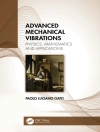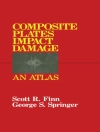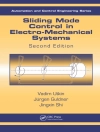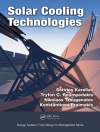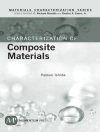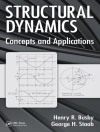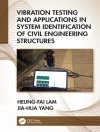Ceramic matrix composites (CMCs) are at the forefront of advanced materials technology because of their light weight, high strength and toughness, high temperature capabilities, and graceful failure under loading. During the last 25 years, tremendous progress has been made in the development and advancement of CMCs under various research programs funded by the U.S. Government agencies: National Aeronautics and Space Administration (NASA), Department of Defense (Do D), and Department of Energy (DOE).
Ceramic composites are considered as enabling technology for advanced aeropropulsion, space propulsion, space power, aerospace vehicles, and space structures. CMCs would also find applications in advanced aerojet engines, stationary gas turbines for electrical power generation, heat exchangers, hot gas filters, radiant burners, heat treatment and materials growth furnaces, nuclear fusion reactors, automobiles, biological implants, etc. Other applications of CMCs are as machinery wear parts, cutting and forming tools, valve seals, high precision ball bearings for corrosive environments, and plungers for chemical pumps. Potential applications of various ceramic composites are described in individual chapters of the present handbook.
Handbook of Ceramic Composites is different from the other books available on this topic. Here, a ceramic composite system or a class of composites has been covered in a separate chapter, presenting a detailed description of processing, properties, and applications. Each chapter is written by internationally renowned researchers in the field. The handbook is organized into five sections: Ceramic Fibers, Non-oxide/Non-oxide Composites, Non-oxide/Oxide Composites, Oxide/Oxide Composites, and Glass and Glass-Ceramic Composites.
This handbook should be a valuable source of information for scientists, engineers, and technicians working in the field of CMCs, and also for designers to design parts and components for advanced engines, and various other industrial applications.
Tabla de materias
Ceramic Fibers.- Oxide Fibers.- Non-oxide (Silicon Carbide) Fibers.- Non-oxide/Non-oxide Composites.- Chemical Vapor Infiltrated Si C/Si C Composites (CVI Si C/Si C).- Si C/Si C Composites for 1200°C and Above.- Silicon Melt Infiltrated Ceramic Composites (Hi Per Comp™).- Carbon Fibre Reinforced Silicon Carbide Composites (C/Si C, C/C-Si C).- Silicon Carbide Fiber-Reinforced Silicon Nitride Composites.- Mo Si2-Base Composites.- Ultra High Temperature Ceramic Composites.- Non-oxide/Oxide Composites.- Si C Fiber-Reinforced Celsian Composites.- In situ Reinforced Silicon Nitride — Barium Aluminosilicate Composite.- Silicon Carbide and Oxide Fiber Reinforced Alumina Matrix Composites Fabricated Via Directed Metal Oxidation.- Si C Whisker Reinforced Alumina.- Mullite-Si C Whisker and Mullite-Zr O2-Si C Whisker Composites.- Nextel™ 312/Silicon Oxycarbide Ceramic Composites.- Oxide/Oxide Composites.- Oxide-Oxide composites.- WHIPOX All Oxide Ceramic Matrix Composites.- Alumina-Reinforced Zirconia Composites.- Glass and Glass-Ceramic Composites.- Continuous Fibre Reinforced Glass and Glass-Ceramic Matrix Composites.- Dispersion-Reinforced Glass and Glass-Ceramic Matrix Composites.- Glass-Containing Composite Materials. Alternative Reinforcement Concepts.
Sobre el autor
Dr. Narottam Bansal is a Senior Research Scientist in the Ceramics Branch, Materials and Structures Division, NASA Glenn Research Center, Cleveland, OH. After receiving his Ph. D. in 1973, he held post-doctoral research assignments in Canada and USA. He has carried out research in a number of areas: solid oxide fuel cells, thermal and environmental barrier coatings, fiber-reinforced ceramic matrix composites for high-temperature structural applications in turbine engines, high-temperature superconductors, sol-gel and combustion processing, refractory glass-ceramics, kinetics of phase transformations, IR-transmitting materials, electroanalytical techniques, ionic diffusion in melts. He has been team leader of a number of technical teams at NASA.
Dr. Bansal is a Fellow of the American Ceramic Society. He is recipient of NASA’s Medal for Exceptional Scientific Achievements, R & D 100 Award, Turning Goals into reality Award, and Hind Rattan Award. He has also received numerous Innovative Technology Development Awards and Tech Brief Awards from NASA and his biography has been included in more than 30 Who’s Who. So far, he has organized 31 International Symposia and edited 23 Conference proceedings. He is author/co-author of 4 books, 6 invited book chapters, 3 review articles, 8 NASA Tech Briefs, and 215 research papers. He has been awarded seven U.S. Patents, so far. Dr. Bansal has been a member of the Technical Committees of International Commission on Glass and International Union of Pure & Applied Chemistry. He has also served on the advisory boards of a number of international conferences.


